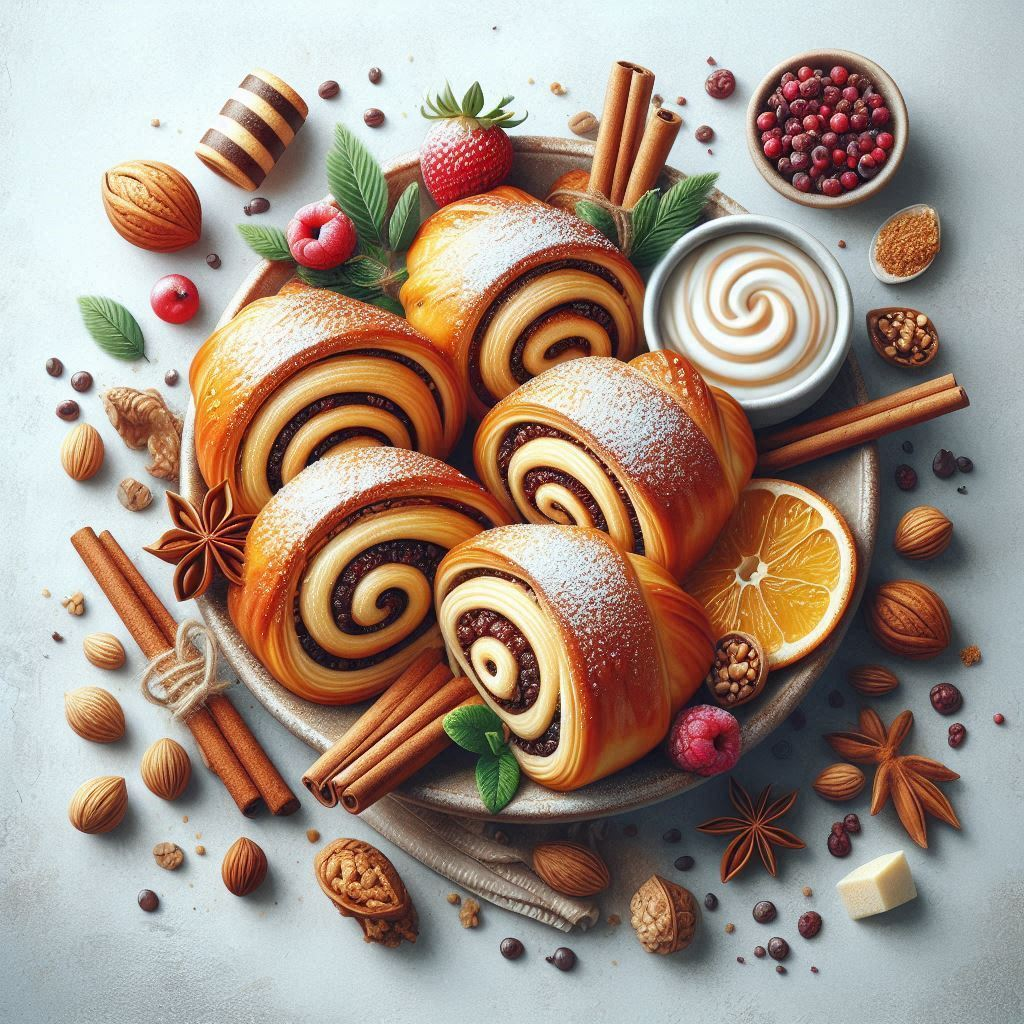
A Bite of History: Unveiling the Secrets of Rugelach
Rugelach, those crescent-shaped pastries filled with sweet, gooey goodness, are more than just a delicious treat. They are a window into the rich history of Jewish cuisine, a testament to the ingenuity of bakers across generations, and a delightful exploration of textures and flavors.
Let’s embark on a journey through time, tracing the origins of this beloved pastry and unraveling the secrets of its preparation.
From Humble Beginnings to Global Delight:
The story of rugelach begins in 16th-century Eastern Europe, where Jewish communities thrived. The name itself, derived from the Yiddish word “ruglach,” meaning “little rolls,” hints at its humble origins. These early rugelach were likely simple, made with dough and filled with fruit preserves or poppy seeds, reflecting the limited ingredients available at the time.
As Jewish communities migrated across the globe, the rugelach recipe traveled with them, evolving and adapting to local tastes and ingredients. In 19th-century Austria, the addition of cream cheese to the filling marked a significant transformation, creating the rich, tangy flavor we associate with rugelach today. This innovation was likely influenced by the growing popularity of cream cheese in Austrian cuisine.
A Symphony of Flavors and Textures:
The beauty of rugelach lies in its versatility. While the basic recipe remains consistent, the fillings and variations are endless, reflecting the creativity of bakers and the diversity of regional influences.
Traditional Fillings:
- Poppy Seed: A classic choice, offering a nutty, earthy flavor.
- Apricot: A sweet and tangy option, often paired with a touch of cinnamon.
- Raisin: A traditional filling, providing a chewy texture and sweet notes.
- Chocolate: A decadent twist, often combined with nuts for added texture.
Modern Innovations:
- Fruit Compote: Combining fresh or dried fruits with spices creates a vibrant and flavorful filling.
- Nut Butters: Almond butter, peanut butter, or cashew butter add a creamy, nutty richness.
- Spiced Cream Cheese: Adding cinnamon, cardamom, or nutmeg to the cream cheese filling adds depth and warmth.
The Art of Rugelach Making:
The process of making rugelach is a labor of love, demanding patience and precision. Here’s a step-by-step guide to creating your own batch of these delightful pastries:
Ingredients:
- Dough:
- Flour: The foundation of the pastry, providing structure and texture.
- Butter: Adds richness and flakiness.
- Sugar: Sweetens the dough and enhances browning.
- Eggs: Bind the ingredients and add moisture.
- Cream Cheese: Contributes to the dough’s tenderness and richness.
- Filling:
- Cream Cheese: The base of the filling, providing tanginess and creaminess.
- Sugar: Sweetens the filling and balances the cream cheese’s tang.
- Vanilla Extract: Adds a touch of warmth and depth.
- Flavorings: Choose your favorite filling options (e.g., poppy seeds, raisins, chocolate).
Instructions:
- Prepare the Dough: Combine the flour, butter, sugar, eggs, and cream cheese in a bowl. Mix until a smooth dough forms. Wrap the dough in plastic wrap and refrigerate for at least 30 minutes.
- Make the Filling: Beat the cream cheese, sugar, and vanilla extract until smooth and creamy. Fold in your chosen filling ingredients.
- Roll and Fill: Roll out the dough into a thin rectangle. Spread the filling evenly over the dough, leaving a 1-inch border on one side.
- Shape and Bake: Roll the dough tightly from the filled side to the unfilled side, creating a log. Slice the log into 1-inch thick rounds. Place the rounds on a baking sheet lined with parchment paper.
- Bake: Bake in a preheated oven at 350°F (175°C) for 20-25 minutes, or until golden brown.
Tips for Success:
- Chill the dough: Refrigerating the dough allows the butter to solidify, resulting in a flakier pastry.
- Don’t overmix: Overmixing the dough can lead to a tough texture.
- Use a sharp knife: A sharp knife will ensure clean, even slices.
- Don’t overcrowd the baking sheet: Give the rugelach space to bake evenly.
- Let cool completely: Allow the rugelach to cool completely before serving to prevent them from becoming soggy.
A Sweet Tradition, a Delicious Legacy:
Rugelach, with its rich history and endless possibilities, is a testament to the enduring power of food. It’s a symbol of tradition, a celebration of flavors, and a reminder that even the simplest ingredients can be transformed into something truly special. So next time you savor a bite of this delightful pastry, take a moment to appreciate its journey, its flavors, and its enduring legacy.



